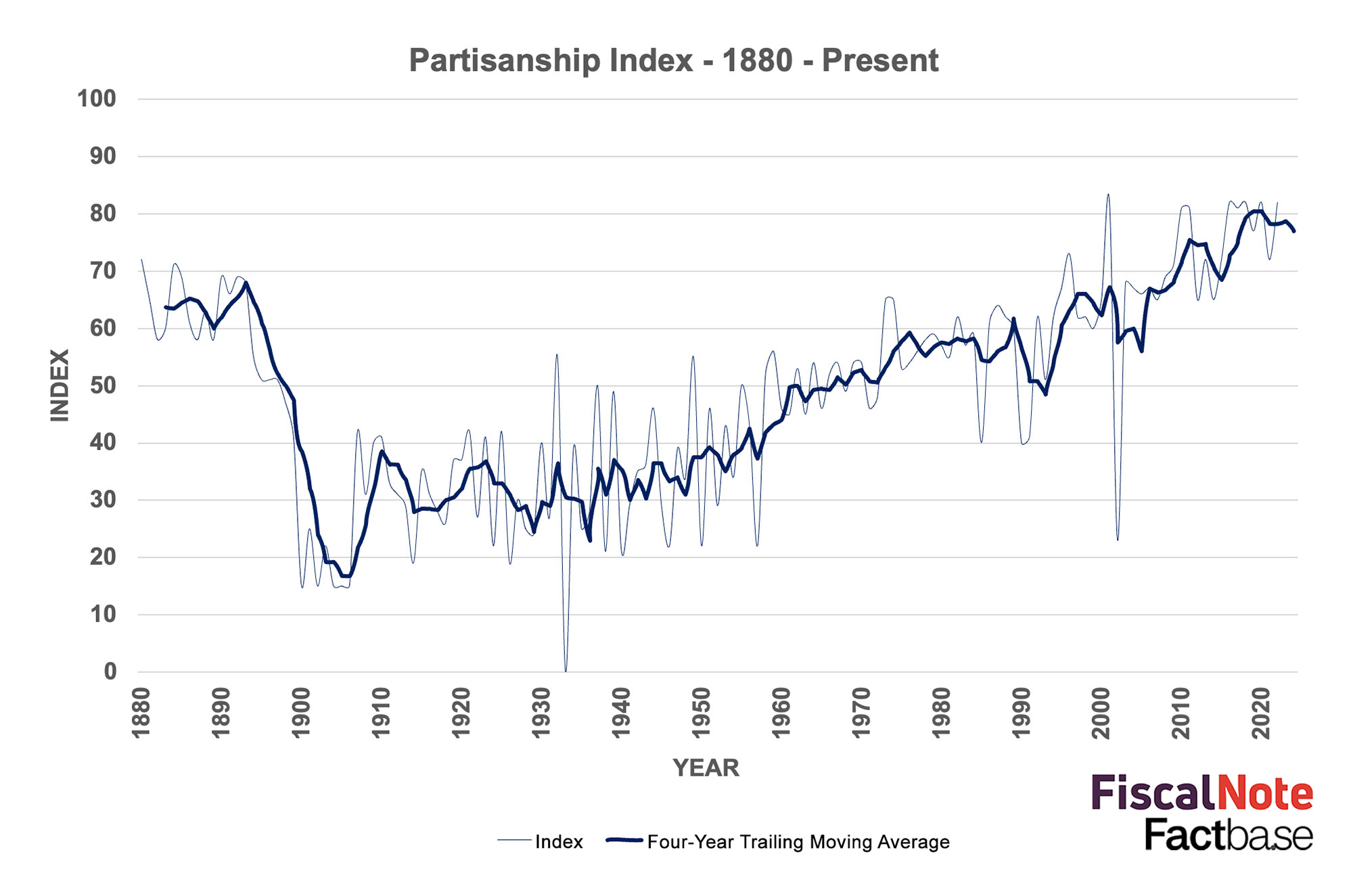State of the Union - Partisanship Index
Negative sentiment levels not seen since the Second Industrial Revolution
Our analysis below shows partisanship in the State of the Union, with a 4-year moving average. Partisanship is measured as usage of confrontational language in the context of domestic political opposition, excluding foreign nations/Native Americans.
Data notes:
- For historical documents, in some cases, if the model objected to producing a score, terms no longer appropriate to describe groups were replaced by "the French."
- When averaging by year, if two different presidents delivered a State of the Union, as was the case in 1953 and 1981, the outgoing president's score was ignored and the new incumbent was used. In cases where more than one speech considered an SOTU was submitted by the same president (see Nixon, 1974), the score was averaged.
- Data is missing in 1933.
Partisanship on the rise
From 2010 onwards, the partisanship index averages between 70-80 points, which is 10 points above the 65 point average in the 1880s, an era following the Civil War and Reconstruction. There was significant decline in partisanship starting in 1894, then increasing again in 1906 and rising steadily from there. There are significant drops seen in 1914, during World War I, as well as in 2002, following the events of 9/11 in the previous year.
